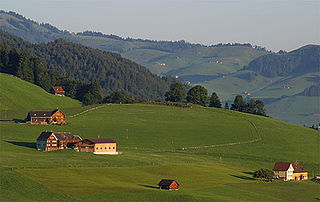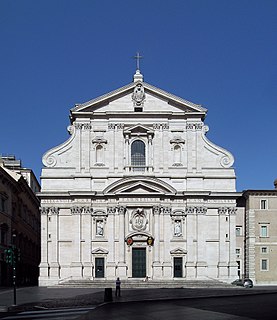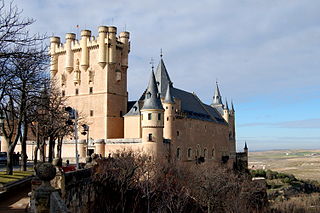| Reštanj | |
|---|---|
| Coordinates: 46°2′35.36″N15°28′58.29″E / 46.0431556°N 15.4828583°E Coordinates: 46°2′35.36″N15°28′58.29″E / 46.0431556°N 15.4828583°E | |
| Country | |
| Traditional region | Styria |
| Statistical region | Lower Sava |
| Municipality | Krško |
| Area | |
| • Total | 9.34 km2 (3.61 sq mi) |
| Elevation | 420.3 m (1,378.9 ft) |
| Population (2002) | |
| • Total | 241 |
| [1] | |
Reštanj (pronounced [ɾɛˈʃtaːn] ) is a dispersed settlement in the hills north of Senovo in the Municipality of Krško in eastern Slovenia. The area was traditionally part of Styria. It is now included in the Lower Sava Statistical Region. [2]

A dispersed settlement, also known as a scattered settlement, is one of the main types of settlement patterns used by landscape historians to classify rural settlements found in England and other parts of the world. Typically, there are a number of separate farmsteads scattered throughout the area. A dispersed settlement contrasts with a nucleated village.

Senovo is a settlement in the Municipality of Krško in eastern Slovenia. It developed into a large settlement after its brown coal mine began to operate in 1839, but especially in the early 20th century. The mine closed in the second half of the 1990s. The area was traditionally part of Styria. It is now included with the rest of the municipality in the Lower Sava Statistical Region.

The Municipality of Krško is a municipality in eastern Slovenia. Its seat is the town of Krško. The area is traditionally divided between Lower Styria and Lower Carniola. The entire municipality is now included in the Lower Sava statistical region.
The local church is built on a hill in the eastern part of the settlement and is dedicated to Saint Jodocus (Slovene : sveti Jošt). It belongs to the Parish of Koprivnica. It is a Gothic building that was restyled in the Baroque in the 18th century. [3]

Slovene or Slovenian belongs to the group of South Slavic languages. It is spoken by approximately 2.5 million speakers worldwide, the majority of whom live in Slovenia. It is the first language of about 2.1 million Slovenian people and is one of the 24 official and working languages of the European Union.

Gothic architecture is a style that flourished in Europe during the High and Late Middle Ages. It evolved from Romanesque architecture and was succeeded by Renaissance architecture. Originating in 12th-century France, it was widely used, especially for cathedrals and churches, until the 16th century.

Baroque architecture is the building style of the Baroque era, begun in late 16th-century Italy, that took the Roman vocabulary of Renaissance architecture and used it in a new rhetorical and theatrical fashion, often to express the triumph of the Catholic Church. It was characterized by new explorations of form, light and shadow, and dramatic intensity. Common features of Baroque architecture included gigantism of proportions; a large open central space where everyone could see the altar; twisting columns, theatrical effects, including light coming from a cupola above; dramatic interior effects created with bronze and gilding; clusters of sculpted angels and other figures high overhead; and an extensive use of trompe-l'oeil, also called "quadratura," with painted architectural details and figures on the walls and ceiling, to increase the dramatic and theatrical effect.
On a hill north of the settlement are the ruins of Reštanj Castle. It was mentioned in written documents dating to 1235. It was destroyed during the Croatian-Slovenian peasant revolt in 1573 and never rebuilt. [4]

A castle is a type of fortified structure built during the Middle Ages by predominantly the nobility or royalty and by military orders. Scholars debate the scope of the word castle, but usually consider it to be the private fortified residence of a lord or noble. This is distinct from a palace, which is not fortified; from a fortress, which was not always a residence for royalty or nobility; and from a fortified settlement, which was a public defence – though there are many similarities among these types of construction. Usage of the term has varied over time and has been applied to structures as diverse as hill forts and country houses. Over the approximately 900 years that castles were built, they took on a great many forms with many different features, although some, such as curtain walls and arrowslits, were commonplace.



